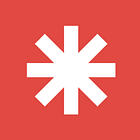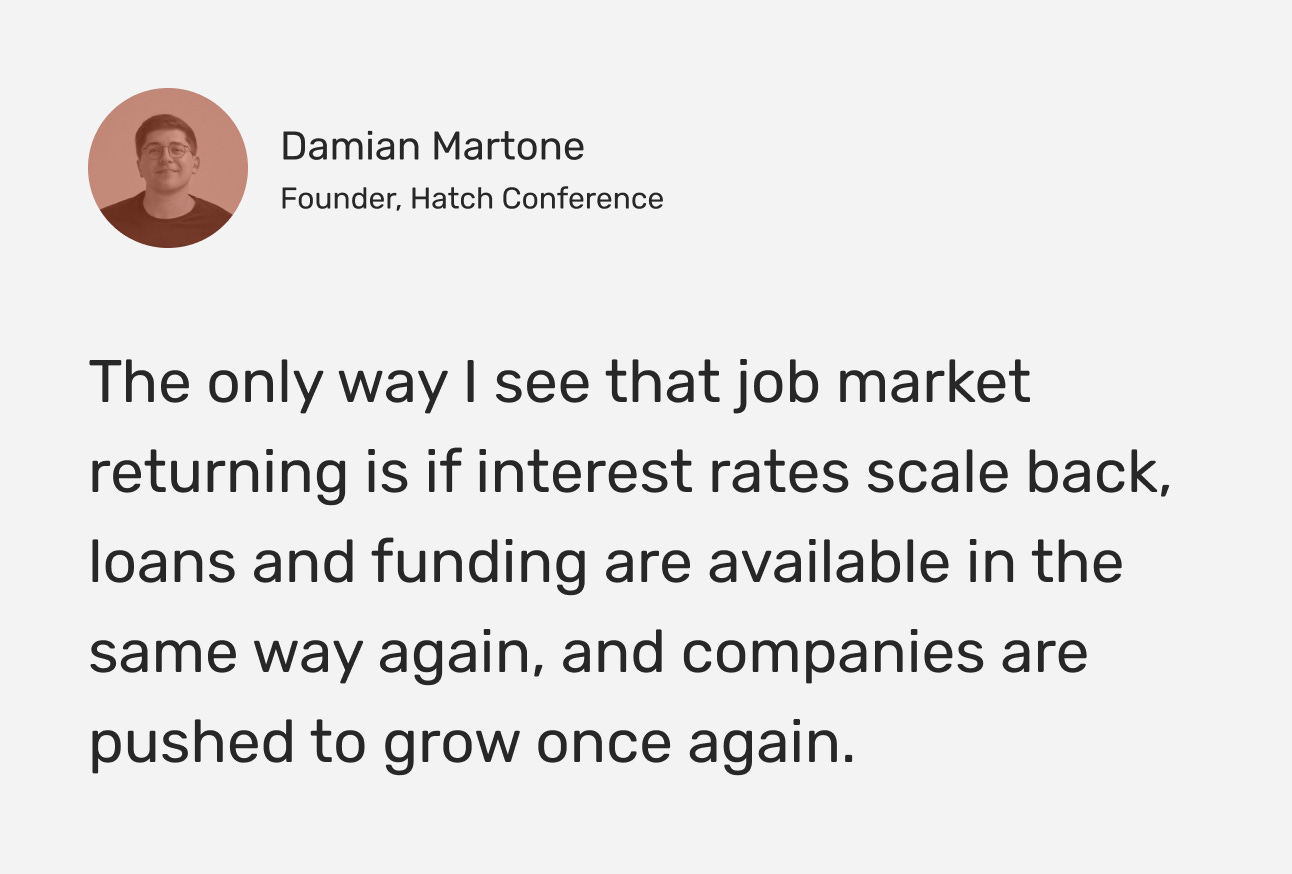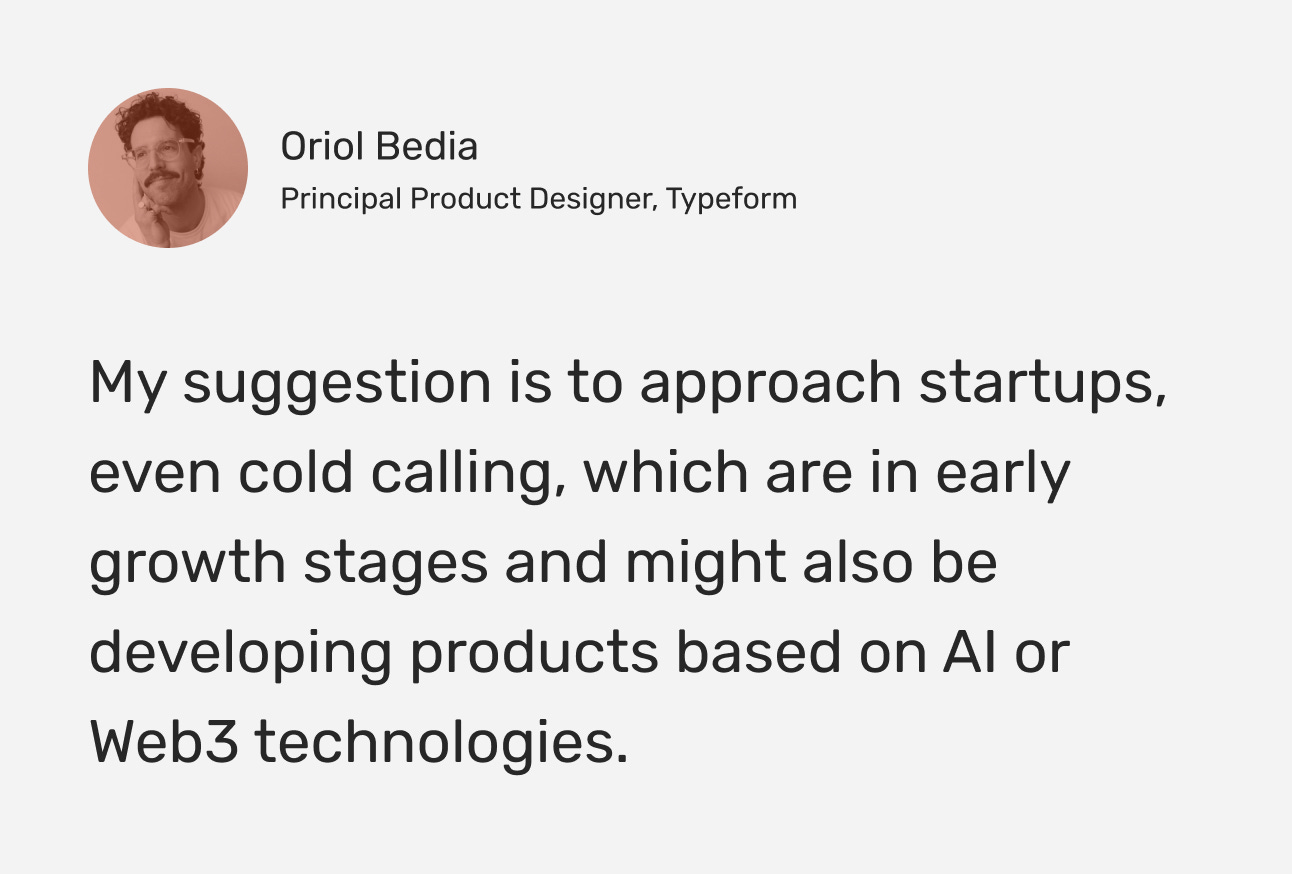The Future of the Job Market in UX and Product Design
Hi, it’s Arek! Welcome to Fundament, a newsletter that enables growth in UX and product design. Not subscribed yet? Join for free now:
More than half a million tech employees have been laid off since 2022. According to the latest data available at the time of writing this article, the exact number is 508 301. Most people have lost their jobs in the US, but Europe and other regions have also been affected.
It’s truly disheartening to see so many businesses letting their staff go. If you have been affected, I’m deeply sorry for you. And if you are currently looking for a new job, I wish I could say it’s going to be fine.
But in reality, it might be challenging.

We have been observing a massive downturn in design roles compared to the rise during the COVID-19 pandemic. Indeed’s data shows dramatic change in the Australia, UK, Ireland, and Canada markets between Q1 2018 and Q3 2023. Another data set for the US presents a similar change between 2021 and 2023. Every UX job market in other European countries looks comparable.
It’s tough like never before. Especially for early career designers.
Breaking into UX and product design is almost impossible these days
It should be obvious to everyone how layoffs affected the UX job markets worldwide. Add to the equation today’s economy in recession, armed conflicts happening in multiple places across the planet, plus countless people shifting from other occupations to UX, and there’s the result. Even 1,000 applications for an entry-level UX design job offer.
Prompting Glassdoor’s search for a UX Designer open roles in various markets at the beginning of May gave me the following results: 1 147 job offers in the United States, 545 in Germany, 346 in the United Kingdom, 240 in Spain, and 204 in Poland. Searching for a Product Designer role gave slightly more promising effects, which were 1 036 in the US, 1 254 in Germany, 1 546 in the United Kingdom, 529 in Spain, and 228 in Poland.
To be fair, it’s not the end of the world yet.
But what if you are one of these young designers who just graduated, got certified from a design bootcamp, or maybe have even a year or two of hands-on experience? Here’s what is waiting for you on the job market.

Open entry-level UX Designer roles:
United States: 18 (1.5%)
Germany: 29 (5.3%)
United Kingdom: 7 (2%)
Spain: 6 (2.5%)
Poland: 6 (2.9%)
Open entry-level Product Designer roles:
United States: 24 (2.3%)
Germany: 58 (4.6%)
United Kingdom: 190 (12.1%)
Spain: 29 (5.5%)
Poland: 7 (3%)
The average? A staggering 4.2%. Except for the UK, only a few percent of the open roles are targeted at junior and intern designers. We could assume that currently, less than 5% of tech companies are open to hiring entry-level talent. They don’t want to spend extra time on teaching, mentoring, and giving juniors space to make mistakes. The majority of companies prefer hiring more experienced designers who don’t require so much oversight and can make risky decisions on their own.
If you are curious what are the key differences between junior and senior designers, I explained them in one of my previous articles:
We can all agree that breaking into UX and product design is almost impossible today. Luckily, not entirely. There are certain things you could do to develop new skills, progress in the areas you haven’t had a chance to learn about on your bootcamp, and eventually make your portfolio better. No discussion that the best way to gain experience and stand out on interviews would be an internship, but there are other methods, too:
I just reviewed over 100 intern resumes and portfolios. Based on that, I’ll publish an article later this spring packed with actionable tips on improving your portfolio and resume. Subscribe to Fundament to increase your chances of securing your first design job!
What will the future bring?
Nobody has a crystal ball and cannot see the future clearly. However, based on our experience, data from current and past design job markets, and other aspects of our lives, such as the economic indicators, we could put ourselves in a fortune-teller’s shoes for a moment and play a little game.
For this game, I invited three wonderful and experienced players:
Damian Martone, founder of Hatch Conference and co-founder of Merchant Inspiration,
Michał Butkiewicz, Design Director at Hippo Insurance,
Oriol Bedia, Principal Product Designer at Typeform.
When will the job market bounce back?
All experts agreed that the market will bounce back eventually. The only unknown aspect is in what form. I believe we won’t go back to how the market was in the pre-pandemic days just because the discipline is also undergoing a transformation that makes the way we create digital products very different, voices Damian Martone.
The wide availability of AI tools and the fact that we live in a fast-paced, constantly evolving world is not making it any easier to predict how our jobs will look in the next few years. The market will recover, but it’s uncertain if it will return to the days when Product Designers had hundreds of offers to choose from. Also, it’s hard to predict how AI will influence this bounce back, says Michał Butkiewicz.
Today’s state of economic factors is clearly one of the most significant reasons why the UX and every other job market is going through a very tough period. We're facing an economic slowdown, whether you call it a crisis or post-Covid recovery. Interest rates aren't low anymore, and nearby wars and inflation are making things harder. Companies slowed down and stopped their hiring. It's difficult to secure a job, not just in the design field, which can be a bittersweet consolation, states Michał Butkiewicz.
There’s still a chance that we will see the market flourishing again, but maybe not as fast as we all wished for. When the market was exploding, so was funding, and companies were pushed to grow, so they needed to hire. So the only way I see that job market returning is if interest rates scale back, loans and funding are available in the same way again, and companies are pushed to grow once again. But for the time being, every dollar counts, so I wouldn’t count on it, suggests Damian Martone.
On the other hand, positive trends in Spain indicate a bright future for this market in a much shorter perspective. If the global economy keeps improving throughout 2024, we’ll see more opportunities across the industry coming up from early 2025. This prediction should be reinforced, taking into consideration that Spain has the most positive economic indicators for Q4 2023 and Q1 2024 within central Europe, says Oriol Bedia.
Taking action today
We have already concluded that the market will bounce back, but it won’t happen soon. What can you do today to avoid starving to death while waiting for the next golden era of tech and product design?
First of all, you have to make sure your resume and portfolio are free of flaws. They have to look good from both visual and content perspective. Plus, it would be ideal if you could find your own way to stand out from the crowd. When I post a job offer, I get around 150 quality applications, yet most resumes look alike. It’s rare to find someone who truly stands out—not even with a flashy portfolio, but with a simple message explaining why they are the perfect fit, says Michał Butkiewicz.
You might need to act like a salesman and knock on a few doors. Especially on the doors of the startups that work on new and groundbreaking technology, as they already are or soon will be in need of help from a designer. The other interesting aspect for graduates and entry-level designers is understanding which companies are most cautious during global economic shifts. My suggestion is to approach startups, even cold calling, which are in early growth stages and might also be developing products based on AI or Web3 technologies, suggests Oriol Bedia.
Getting prepared for the job market of tomorrow
What’s gonna work better in perspective of, let’s say, the next five or ten years? Should you play all-in on specializations, learn one aspect of design, and become, e.g., a UI Designer or a Design Systems Specialist? Or maybe it would give better results if you mastered all aspects of UX and became a UX Generalist or so-called UX Unicorn?
As always, it depends. I think it’s tied a lot to one’s personality and what one is comfortable with. While generalists will always be preferred, specialists are essential for some companies, so that contradiction is likely to forever exist, recommends Damian Martone.
Today’s market might suggest that in the short term, specializations could do the trick better. Looking at the current market, which is highly saturated with many designers looking for a job, and taking the perspective of companies who are cautious about investing in hiring, I believe that it makes more sense to become a specialist of any kind. That should make it much easier for a company to understand the potential return on investment of a given candidate, says Oriol Bedia.
Visual skills have been underrated for the past few years. Design education was more focused on user-centricity, design thinking methodology, and hardcore UX like these people would never have to touch a user interface. But it is slowly changing, and the craft is becoming valuable again. I no longer believe in separating UX and UI. Years ago I used to be a firm believer and proud to be strictly a ‘UX designer’. But the reality we live in has changed. In my opinion, as a junior designer, your UI skills are your main showcase. You won't impress anyone with the Design Thinking course you took online since you're unlikely to lead client workshops. My advice is to focus on UI, keep UX in mind, and learn about research and accessibility. This approach will improve your job prospects, reveals Michał Butkiewicz.
Whatever horse you put your money on today doesn’t mean it’s a life-long decision. Even if you focus more on the visual aspect of design, as Michał suggested, you can later gain new skills and make a shift if needed. In any case, I don’t see this as a career-long question, meaning that entry-level designers shouldn't be afraid to specialize first and later become more generalists as they grow professionally, adds Oriol Bedia.
Further reading
How UX Job Markets Are Changing in Canada, Australia, Ireland, and the UK, by Kathryn Brookshier
Zander Whitehurst on requirements in the junior-level job ads
Upcoming events
Hatch Conference (September 4-6) is an event for senior (and above) designers wondering what's next in their careers and in design. The three-day invitation-only event has different days dedicated to Craft, Strategy, and the Conference on September 6th, with speakers from companies like Linear, Spotify, Replit, and many more.
After the success of last year's Leadership Ateliers Day, the team of Hatch Conference made it into a two-day event for design leadership training on May 15th and 16th. This year's tickets are almost gone, but it is also planned for 2025 for Berlin, Barcelona, and potentially other cities.









